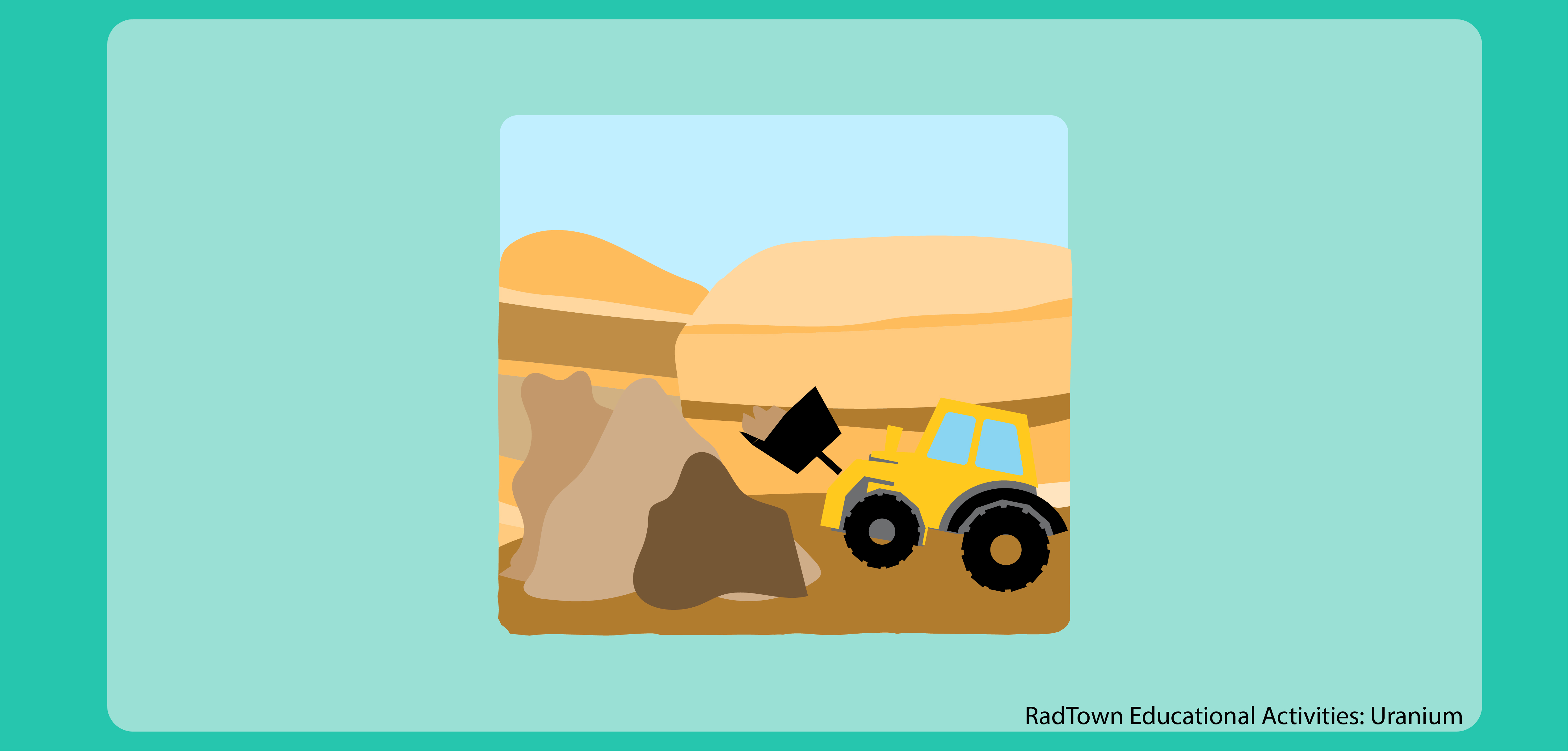RadTown Uranium Activity 4: Uranium Mining Methods
Uranium extraction methods have changed throughout the years. Learn more about open-pit mining, heap leaching, and in-situ leaching using this activity. This activity is intended for middle and high school students.
- Objectives
- Next Generation Science Standards
- Materials and Resources
- Printable Worksheets and Classroom Aids
- Time
- Vocabulary
- Directions
- Common Core State Standards
Objectives
Students will:
- Hypothesize and list the benefits and impacts of mining methods.
- Consider whether they would be for or against a particular mining method being used in their community.
Next Generation Science Standards
The concepts in this activity can be used to support the following science standard:
- ESS3. Earth and Human Activity
Materials and Resources
Each italicized document title can be found at the bottom of this page, and is available for printing and distribution.
- Uranium: Teacher Background Information
- Vocabulary Materials
- Uranium Mining Methods Worksheet (one per student, pair or group) and Uranium Mining Methods: Teacher Answer Key
Printable Worksheets and Classroom Aids
Time
You may choose to have students complete the entire activity within one or two class periods. If time or computer access is limited, the activity can be introduced, completed outside of the class and concluded in another class period.
Vocabulary
- Ionizing radiation
- Radiation
- Radioactive atom
- Radium
- Radon
- Uranium
- Uranium milling
- Uranium mining
Directions
- Start with a vocabulary activity if students are not familiar with uranium and the vocabulary used in this activity.
- Explain that the U.S. uranium mining boom started in the mid-1940s. Once the U.S. built a stockpile of uranium in the 1970s, the mining industry slowed. Uranium mining is still in operation, but on a much smaller scale. The U.S. mining industry uses two distinct methods to extract uranium ore: physically removing the ore-bearing rock from the soil for processing or chemically dissolving uranium from the ore at the site.
- Provide students with a Uranium Mining Methods Worksheet and review the directions. Students can form hypotheses based on their present knowledge or allow them to access any available resources, such as the Internet, library or school books or individuals who may have insight on mining and environmental issues.
- Conclude by having students share their responses. You can reference the Uranium Mining Methods: Teacher Answer Key. Compile the “for” and “against” votes to see which method the class would be in most favor of, or if they would not want to allow mining in their community.
- Optional activities or extensions: Have students:
- Debate the pros and cons of the different mining methods.
- Develop models or drawings that show the mining process and impacts on the earth, people and our environment.
The concepts in the Uranium Mining Methods activity align with the following
- CCSS English Language Arts Standards for Literacy in History/Social Studies, Science, & Technical Subjects:
- CCSS.ELA-LITERACY.SL.6-12.4 Presentation of Knowledge and Ideas
- CCSS.ELA-LITERACY.WHST.6-12.1 Text Types and Purposes

